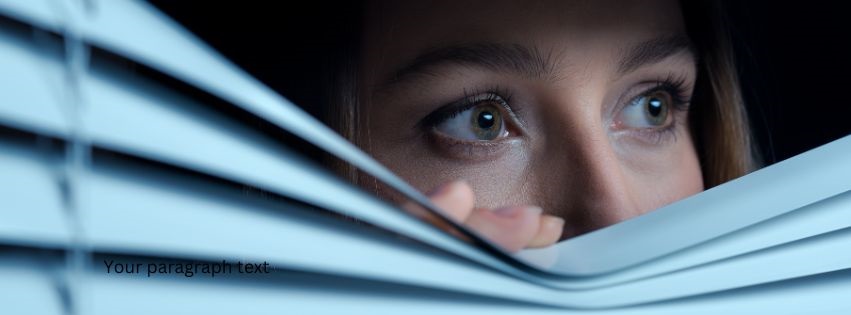From Subtle Unease to Heart-Pounding Thrills: The Use of Tension in Fiction

For my second novel, Blindspot, I ventured into a new genre, that of psychological suspense. It’s the type of book I gravitate to as a reader and I’m a long-term fan of anything in the mystery realm (I devoured the entire Agatha Christie oeuvre when I was sixteen) How hard could it be? Insert hubris emoji here.
What I quickly discovered is that every chapter—make that every scene—has to employ tension so that the reader is experiencing the same emotion my protagonist Rachel is, that of a mounting sense of uneasiness and ultimately danger as she realizes she is being stalked by an unknown assailant.
I thought it might be helpful to examine one particular passage early in the novel and how small, almost throwaway occurrences, can be used to create this sense of foreboding. Let’s look in depth at how this one chapter (pages 35-40) contributes to the over-all tension building in the novel, even from this early on.
Tension through small details: The day starts out with Rachel, an assistant district attorney, driving to work. Not exactly an exciting scene. But in this case, it’s pouring rain, resulting in traffic jams and lane closures, making her on edge, worried over being late to work, and flustered once she gets there. In her mad rush from the parking garage, her tennis shoes get soaked.
Tension through unanswered questions: When she enters her cubbyhole of an office, Rachel finds a huge bouquet of peonies filling the space, their cloying fragrance another irritant to an already tension-filled day. Her work space—her sanctuary—has been invaded, raising questions: How did this bouquet get here, who sent it, who knows this is her favorite flower, what is the cryptic drawing of a broken heart dripping blood supposed to signify?
Tension through contrast: We see Rachel snipe at her secretary Rita, demanding to know where the flowers came from and yelling at her to track down the delivery person and dispose of the bouquet. Rita, who had thought the flowers had come from an admirer and even teased Rachel about it earlier, is flummoxed by Rachel’s reaction, nicely contrasting the two personalities.
Tension through sub-plot: We already know Rachel has a work “enemy” in Shula Kar, an up-and-comer who’s her chief rival for a possible promotion. When Rachel retreats to the restroom to splash cold water on her face and get herself under control, who should she encounter but her nemesis, and the two engage in a barbed interchange that further exacerbates Rachel’s unease.
Tension through hinting at things to come: We see Rachel leaving work late at night, wearing heels since her tennis shoes are still wet. The parking garage is deserted, the bulb in the stairwell is burnt out, there are no people around. All things that put Rachel further on edge as she rushes to her car, glancing in every corner, fearful of every shadow. The setting itself is contributing to the tension in the air.
Tension through raising the stakes: She spots something under her windshield wiper and reads the message. “It’s no use running. I’ll catch you.” Now the mystery deepens. It’s no longer about the strange phone calls she’s been getting or the bouquet. This is an outright threat. Someone is truly after her but who and why?
Tension through internal conflict: In her haste to get inside her car and lock the doors, she drops the note and it skids under a car nearby. Rachel has enough sense not to go after it, but quickly climbs inside, a million questions running through her head. Should she involve the police? Should she hire protection? Does the stalker know where she lives? Is her teenage daughter at risk?
Tension through micro-tension: She hears a car approaching from a lower level. It inches closer, passes her by, and parks around the corner, several yards away. The driver turns off the lights, turns off the engine, but doesn’t get out. Rachel reaches for the phone, but in her haste, drops it and it skids onto the floor on the passenger side.
Tension through a ticking clock: A minute ticks by. It’s a stand-off. Who will make the first move? Rachel retrieves her phone and dials 9-1-1. “What is the nature of your emergency?” she hears.
I’ll leave you there, hopefully filled with a sense of dread as to what might happen next.
Of course, not every chapter in your book will have all these moments of tension. You’ll want to calibrate more intense chapters with ones that allow the characters (and the reader) to take a breath, gather their thoughts, and digest the plot. And if you’re not writing a suspense drama, you’ll be adding tension in less overt ways, be that through the environment (raging snowstorm, drought, road closures), interpersonal interactions (arguments, rivalry, betrayal), or character’s actions (hiding a necklace, telling a lie). But regardless, plan to add some tension in every chapter to keep the story moving forward and the reader turning pages.